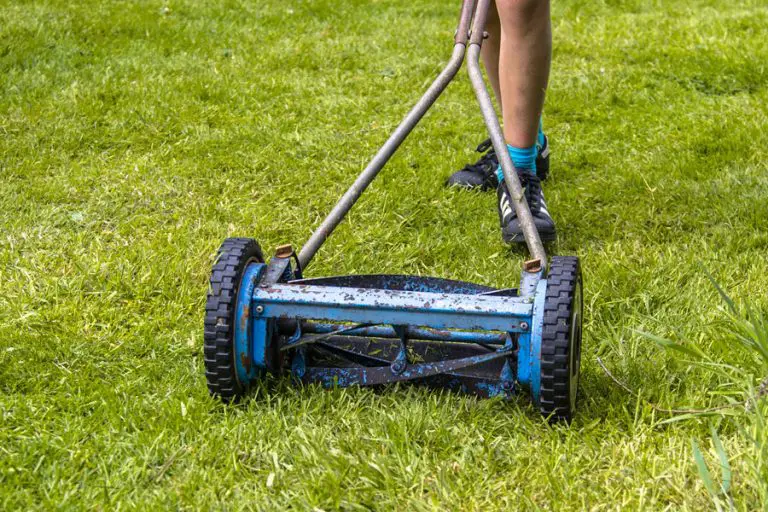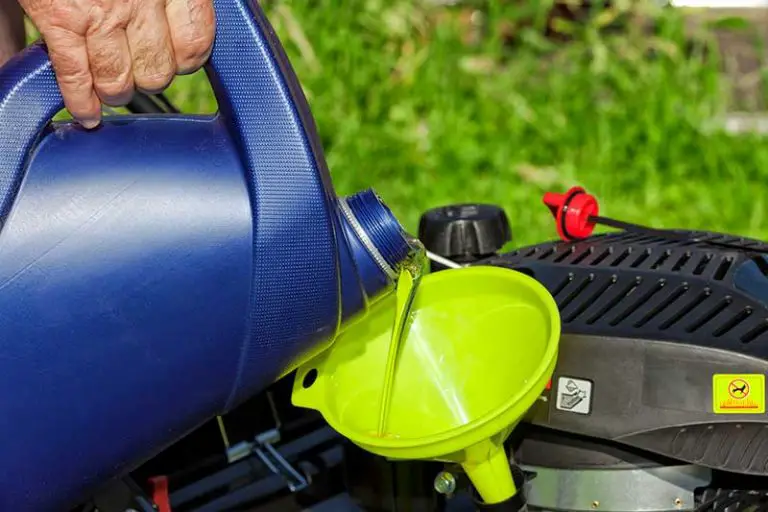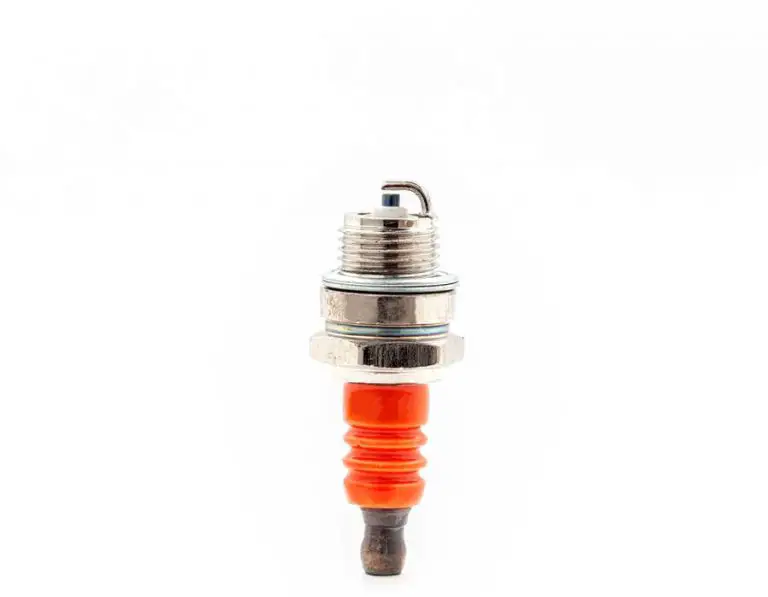How Short to Cut Grass Before Winter
How do you know when to start cutting your grass before winter? And when does grass stop growing as it gets colder?
Many factors go into choosing when to cut your lawn, and one of the most important cuts you will do all year is the last mow of the season before winter. Cutting your grass to the right height before winter sets in is crucial to ensure that your grass doesn’t grow too long and become damaged in the cold weather.
Generally speaking, the ideal height to cut grass before winter is between 2 and 2 ½ inches. However, the exact height will ultimately depend on the specific type of grass you have growing in your lawn.
Read on to learn more about the recommended heights to cut grass before winter for each grass type. Additonally, cutting your grass to the correct height isn’t the only thing that leads to a healthy lawn throughout the winter – for this reason, we’ll also provide tips for preparing during the fall months so that your grass survives until spring without any problems.
How Short Should You Cut Your Grass Before Winter?
During your last mowing session, which should be when the temperatures consistently stay below 50 degrees Fahrenheit, you should cut your grass to a height of 2 inches. This is ideal for your lawn because it keeps the soil warm and prevents patches of dead grass from showing up after winter has passed.
It’s best to mow closer to the ground if you have Bermuda or Zoysia grass. Cutting your Bermuda or Zoysia grass too high will result in brown patches of dead grass that are noticeable when you compare it to your neighbor’s lawn. Consider cutting your Bermuda or Zoysia grass to about one inch during the winter.
Another grass species, St. Augustine, goes dormant over the winter. Don’t cut it any lower than 2 inches above ground level before winter hits. Cutting St. Augustine grass too short can damage your lawn by killing the crowns that lie just under the surface of the soil. See our article How to Bring Back Dead St. Augustine Grass if you suspect that you’ve damaged your St. Augustine.
Kentucky bluegrass is another type of grass that should get cut at 2 inches high before winter hits. Cut your Kentucky Bluegrass too short and brown spots will appear in the spring.
Fescue grass is suitable for the 2 inches rule, too, although you may trim it shorter if desired.
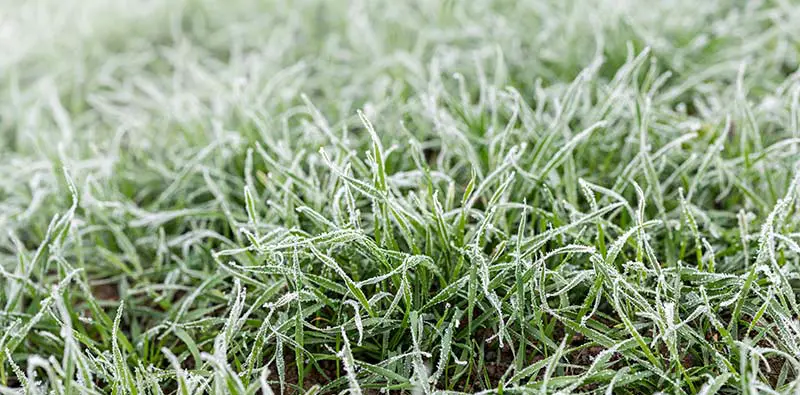
What Are the Benefits of Cutting Grass Before Winter?
Cutting your grass before winter is one step of many that help to prepare your grass to survive the winter months. Generally, it’s a good idea to keep your lawn healthy throughout the fall months so that it can go dormant over winter without problems.
A healthy lawn is less likely to experience patches of dead grass after the winter months end. You won’t leave yourself as much work to do when the weather warms up again in spring.
Cutting grass before winter also helps prevent weeds from growing throughout your yard. Weeds are one of the biggest lawn care problems that homeowners face every year. Cutting the grass a little bit closer to the ground before winter prevents weed seeds from taking root and sprouting new and unwanted plants all over your lawn.
Is it OK to Cut Grass During the Winter Months?
The best time to cut grass is before the winter months begin. However, it’s OK to mow during the winter if needed.
The best time to cut grass during winter is right before a snowstorm hits. You can wait until after the snowstorm passes, but only if the ground isn’t completely covered in inches of snow. Check your local weather forecast before mowing any time during the winter.
Other Ways to Prepare Your Lawn During the Fall Months
Cutting the grass to its proper height isn’t the only item to think about.
Fertilize Your Lawn in the Fall
Early to late fall is a good time to fertilize your lawn. This helps to prevent patches of dead grass from showing up when spring arrives. Your fertilization schedule will depend on which type of grass you have. Check the label before applying any new fertilizer during your fall lawn care. Here are a few tips to get you started.
You should apply a broad-spectrum formula three to four times a year on St Augustine grass, with a fall application included. On Bermuda grass, it’s best to fertilize twice each year during the summertime and then again just before winter begins.
If you have Kentucky Bluegrass, you should fertilize only twice a year during the summer season. Fertilizing Kentucky Bluegrass in fall or winter isn’t recommended because it contributes to excess growth of the grass’ thatch layer, which can necessitate a dethatching job if left untreated.
Your lawn also needs fertilizer in early fall if you have Fescue grass. Apply a nitrogen-rich fertilizer on Fescue grass.
Perform Aeration
Another important aspect of lawn care during the fall months is to aerate your lawn. This helps prevent soil compaction, which can damage roots and leave grass vulnerable to disease.
Aerating involves removing small cores of soil from the ground using a special machine that will break up any soil clumps. Another way to do this is by using a core shooter, which is just an attachment you put on the front of the mower.
The cores get replaced with air pockets. These air pockets provide room for water, oxygen, and other nutrients to flow through the lawn’s roots.
If you have clay soil, aerating can help break up heavy chunks of dirt to give your grass a better chance at surviving colder temperatures. If you have sandy or loamy soil, aerating can help your grass better absorb water.
Downsides to Cutting Grass Too High Before the Winter Months
If you let the grass grow higher than 2 to 3 inches before winter hits, then this can turn out to be a problem since the grass won’t grow as fast when spring eventually does arrive. Plus, you will have more work to do during the spring and early summer months.
Leaving your grass too long before winter also increases disease and pest problems. Fungal diseases such as Brown Patch, Dollar Spot, Red Thread, and Powdery Mildew can flare up if your grass remains at the incorrect height.
Another problem is that high grass can attract pests like rodents and snakes to your lawn. If you have these types of problems, then treat your lawn before winter with a broad-spectrum disease prevention product.
Avoid Snow Mold
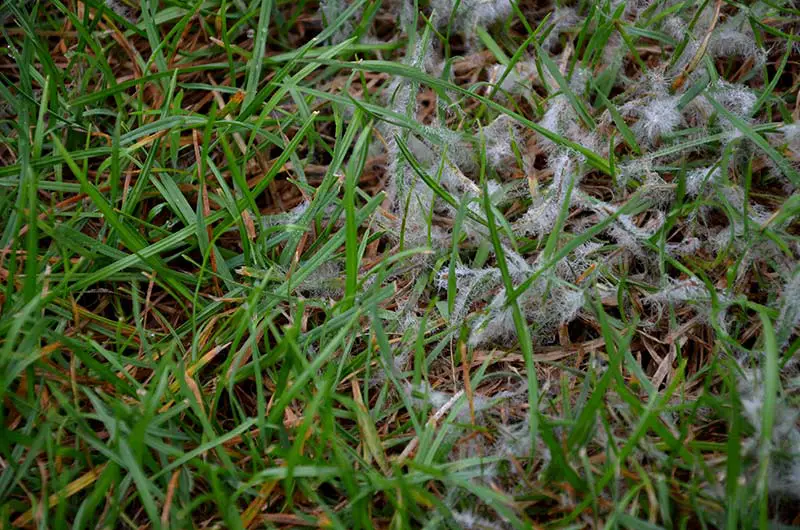
Snow mold also builds up on lawns cut too high. This problem occurs when snow falls and covers the grass but it doesn’t completely melt away. Then, a heavy frost forms a crust over the surface, which blocks sunlight from reaching the grass. The grass underneath gets destroyed due to a lack of sunlight.
If you know that your area gets a lot of snowfall, then it’s imperative that you cut your grass to its proper height near the end of fall.
Although some advice out there involves using a fungicide on snow mold, this isn’t as advisable as taking the proactive approach and cutting your grass to the proper height.
Downsides to Cutting Grass Too Low Before the Winter Months
Cutting your lawn lower than 2 inches before winter can cause it to become weak and thin. The grass must use more nutrients to grow back than it would if left at its normal height for the season. The stress might cause a situation where the grass starts dying off.
Fall Lawn Care Should Also Include Cleanup
It’s a good idea to clean up the yard before winter arrives. Cut all extra vines from around trees and shrubs, as well as any debris that may be lying around. If you have a compost pile, check it thoroughly to make sure there are no tree leaves or other dead vegetation that could attract pests.
Another good idea is to rake around any trees and shrubs. Raking up leaves now will prevent them from rotting on the ground and possibly damaging your lawn.
You can consider spreading the leaves out evenly across your lawn and letting them decompose there. You can rake them up later in spring for use as compost. This is a great way to turn leftover organic matter into rich soil you can use for next season’s gardens.
If the leaves are too wet to rake, then just let them dry out first. You can also mow over the leaves with your lawnmower to chop them up smaller so they will decompose faster.
By doing all this work now, you won’t have to worry about pulling all the debris out of your lawn come spring. This also helps to prevent slug infestations from cropping up in spring, as slugs tend to congregate and lay their eggs in piles of garden debris at this time of year.
Don’t forget to store your lawnmower properly for the winter. This should include cleaning and lubricating the machine, draining any fuel, and covering it up if it might freeze inside your shed or garage. It is also possible to store your mower outdoors over winter, as explained in our article here.
Conclusion
Now you know how short to cut grass before winter. As you can see, cutting the grass before winter is not only the best choice, but it’s the only way to go if you want to avoid potential problems later on. With these helpful tips, you’ll have no problem making sure that your grass stays neatly trimmed before winter arrives.
See our article What is the Best Height to Cut Grass for more tips on the ideal cutting height of your grass throughout the rest of the mowing season.



